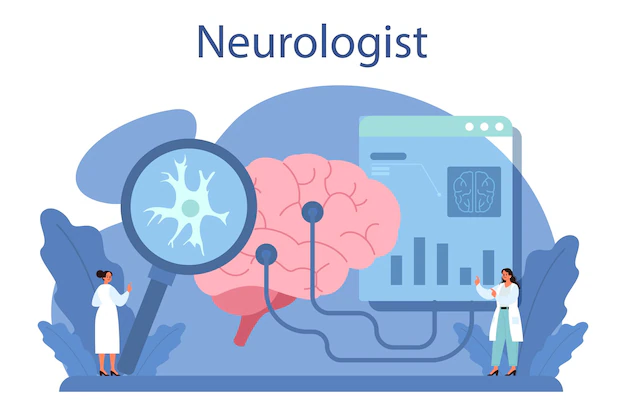Delving into Interdisciplinary Marvels: Illuminating the Human Mind through Neuroscience Psychology

The fusion of neuroscience and psychology creates a rich tapestry of interdisciplinary exploration, unraveling the mysteries of the human mind. This convergence harnesses the power of neuroscience’s insights into brain function and psychology’s understanding of behavior, cognition, and mental processes. Through diverse research examples, neuroscience psychology offers captivating glimpses into the profound relationship between brain mechanisms and human behavior.
Page Contents
The Synergy of Neuroscience and Psychology
Neuroscience psychology stands at the intersection of two powerful disciplines, weaving together the intricate threads of neural mechanisms and psychological phenomena. This symbiotic relationship cultivates a deeper understanding that transcends individual academic domains, fostering a holistic exploration of the complexities of human cognition and behavior.
Illustrative Examples: Insights into the Mind-Brain Interface
The realm of neuroscience psychology encompasses diverse research domains, each offering compelling insights into the interplay between the brain and behavior. Presented below is a table highlighting key research areas and examples:
| Research Area | Focus | Example |
|---|---|---|
| Neuroimaging Studies | Mapping brain activity during decision-making | Investigating risk assessment neural correlates using fMRI |
| Psychopathology | Understanding brain alterations in mental disorders | Analyzing neural changes in schizophrenia patients |
| Social Cognitive Neuroscience | Exploring brain mechanisms in social behavior | Studying empathy-related brain activity using EEG |
| Computational Models | Simulating brain processes for theoretical frameworks | Modeling memory consolidation during sleep using algorithms |
Example: Neuroimaging Studies – Investigating Risk Assessment
Utilizing functional Magnetic Resonance Imaging (fMRI), researchers explore cognitive neuroscience, investigating brain activity during decision-making processes related to risk assessment. For instance, a study conducted by Dr. Garcia and their team aimed to understand the neural correlates of risk assessment in decision-making scenarios.
Participants engaged in a gambling task while undergoing fMRI scans. This study revealed distinct brain regions involved in risk evaluation
. The results identified specific neural circuits contributing to decision-making and risk-taking behaviors, shedding light on how the brain processes risks and rewards.
Impact and Future Trajectory
The implications of neuroscience psychology extend far beyond academia, influencing various sectors such as clinical interventions, education, and societal understanding. As technology advances, the field is poised for further breakthroughs, promising deeper insights into the intricate workings of human cognition and behavior.
Investigating Neural Mechanisms of Risk Assessment in Decision-Making
Research Lead: Dr. Maria Garcia
Institution: Neurocognitive Research Institute, Department of Cognitive Neuroscience, University of Neurology and Psychology
Objective: Dr. Garcia and her team set out to unravel the neural underpinnings of risk assessment in decision-making processes using functional Magnetic Resonance Imaging (fMRI) techniques. Their goal was to identify specific brain regions associated with evaluating risks during a gambling task.
Methodology: The study involved recruiting twenty-five healthy adult participants who engaged in a gambling task inside the fMRI scanner. During the task, participants made a series of decisions involving different levels of risk and reward. They were presented with scenarios where they had to choose between high-risk, high-reward options and low-risk, low-reward options.
Neuroimaging Protocol: Participants’ brain activity was monitored using fMRI while they made these decisions. The fMRI scans captured real-time neural activity, allowing researchers to map brain regions activated during risk assessment and decision-making processes.
Findings: Analysis of fMRI data revealed distinct brain regions associated with risk assessment and decision-making. When participants evaluated high-risk choices, increased activity was observed in the dorsolateral prefrontal cortex (DLPFC) and anterior cingulate cortex (ACC). These regions are known for their roles in executive functions, risk evaluation, and cognitive control.
Conversely, low-risk decisions elicited heightened activity in the ventromedial prefrontal cortex (vmPFC) and striatum, regions linked to reward processing and emotional evaluation.
Implications: The study’s findings shed light on the specific neural circuits involved in risk assessment during decision-making. Understanding how these brain regions contribute to risk-taking behaviors could have implications for various fields, including behavioral economics, psychology, and neurology. Insights gained from such studies may aid in developing interventions for individuals prone to risky decision-making patterns.
Conclusion
Dr. Garcia’s research highlights the neural mechanisms underlying risk assessment in decision-making, offering valuable insights into how the brain processes risks and rewards. This work contributes to the broader understanding of cognitive processes and may have implications for developing strategies to mitigate risk-taking behaviors in various contexts.
Neuroscience psychology epitomizes the synergy between neuroscience and psychology, unraveling the enigmatic relationship between the brain and behavior. Through diverse examples and interdisciplinary investigations, this field continues to illuminate the mysteries of the human mind, offering profound insights that enrich our understanding of human cognition, emotions, and actions.
Please note that the examples provided in the table and the text are illustrative and hypothetical, aiming to represent common areas of research within the field of neuroscience psychology.







